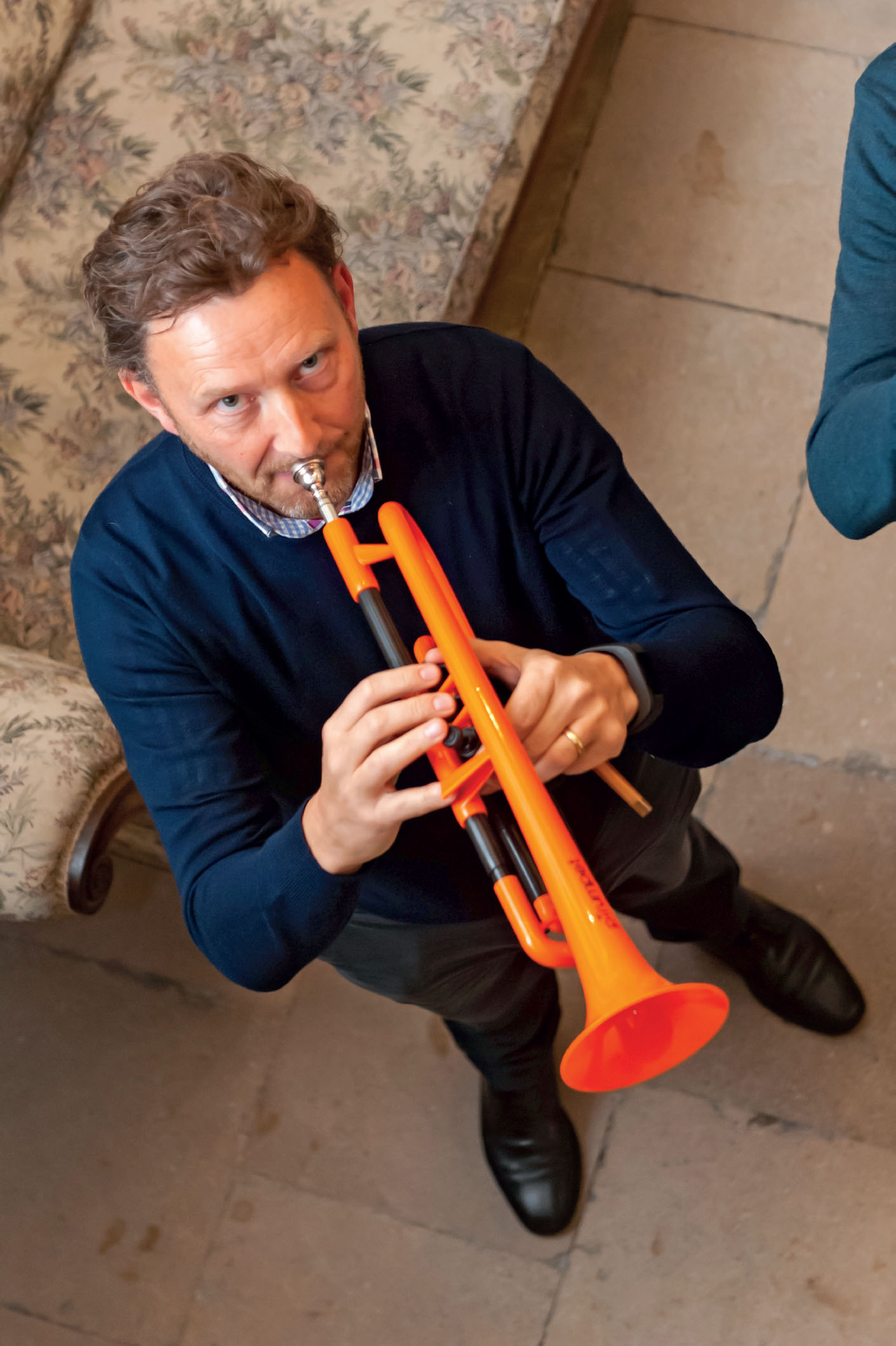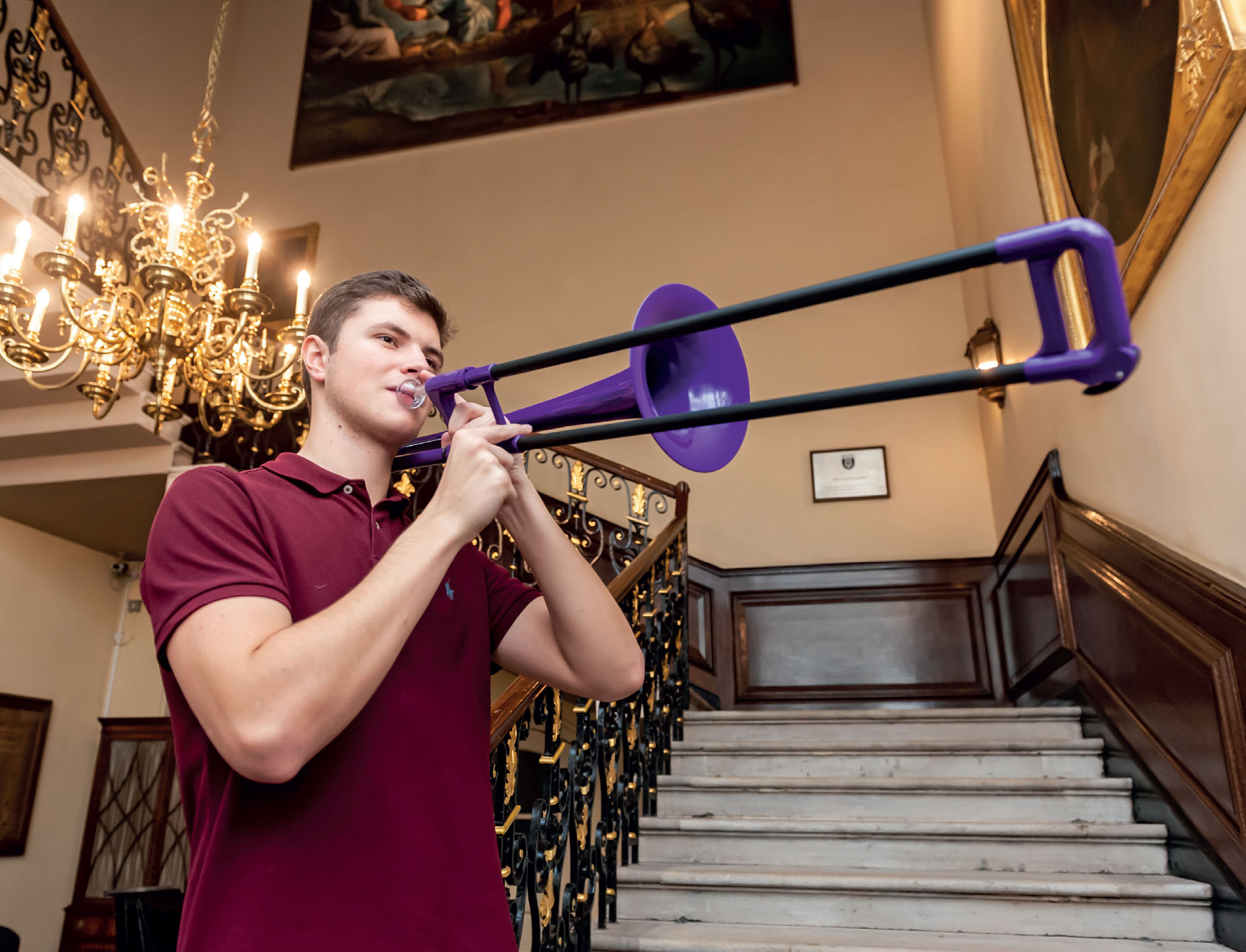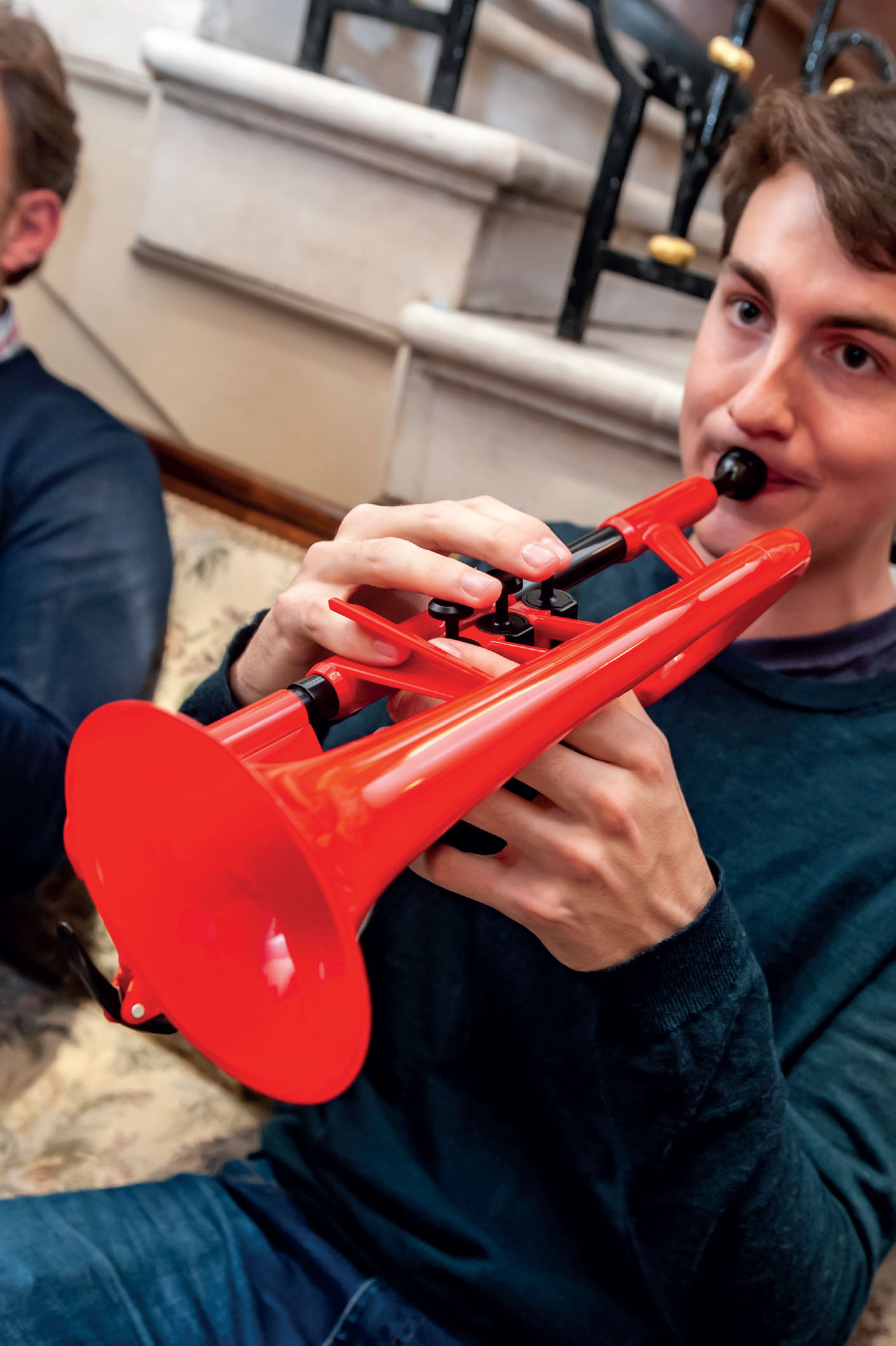
Words: Andrew Dunn, Rhodri Thomas, Dan Taylor
Photography: Lidia Crisafulli
With many thanks to Warwick Music Group for supplying the sample instruments.
Instrument: pTrumpet
Reviewed by: Andrew Dunn, head of wind, brass and percussion
The pTrumpet is a lightweight plastic trumpet in B flat. I reviewed one that was a two-tone bright orange and black colour combination.
The build quality seems well manufactured and appears durable.
The valve block is rather chunky in order to accommodate the wide valve diameter, thicker than a more standard brass trumpet, which could be a hindrance to younger players to hold.

The instrument can be tuned on the main tuning slide but doesn't have any mechanism to fine tune notes on other valve slides. The pTrumpet is robust, but lightweight, which will be good for young players for both playing and transporting, although the case seems rather flimsy, more of a bag really.
The sound is open and the flexibility is good. Internal intonation is a compromise due to the basic mechanisms mentioned previously, but this is to be expected on an instrument of this kind.
The instrument comes with a plastic mouthpiece, but will receive a standard brass mouthpiece too, which will help immensely as the student progresses.
This instrument will appeal to young students, outdoor playing activities (as it won't be affected by the cold), and for teachers to provide instruments for group teaching in a classroom setting, especially as they are easily transported and inexpensive.
Any instrument design that helps encourage musical activity – study and ensemble participation – has to be applauded, so bravo to the pBrass family of instruments.
Instrument: pBones
Reviewed by: Rhodri Thomas, BMus Year 2 student
Trombone in B flat
I reviewed the purple pBone in B flat. There isn't too much resistance and it's very light to play and to carry. The price is great – it's a lot cheaper than the average beginner brass trombone, and the sound quality is fine for beginners, though as they develop they'll need to upgrade to a brass trombone.
From my experience of teaching and conducting a junior band, this instrument is ideal for children aged six to eleven, and has always been successful in getting children (who might not show much interest in music) engaged and more willing to practice. It's also great for a teacher to demonstrate in front of a class in order to spark interest.

This is also more robust than the brass trombone, making it perfect for children. The bell and (more importantly) the slide won't dent easily.
Although the target market is obviously for beginners, it's also great for playing outdoors (particularly in the winter, for carolling and so on) as it's so light to carry, and there's no need to worry about the brass getting cold.
There are some flaws. There is what appears to be a manufacturing issue in that the slide doesn't fit fully into the bell section and the top of the slide is slightly jagged. I have also known the plastic seam to split. The slide isn't very slick and makes a noise when moving – advanced players will notice a significant difference to their usual brass trombone.
Overall, this is a great instrument for the price and in my opinion is perfect for getting children engaged in music. However, I must emphasise this is a starter instrument and will need upgrading to a better quality instrument at some point.
Finally, I'd also recommend buying a better case, as the bag provided doesn't give any protection and therefore doesn't seem very suitable for children.
Alto trombone in E flat
Most things that apply to the B flat trombone also apply to this – it has a great price and is very light. It has a good sound for beginners, but will need to be swapped for a brass instrument as the player develops.
The added advantage is that, as it is smaller, children could possibly start at an even younger age. The drawbacks are that children don't usually start on the alto and it's not usually played outdoors (mostly in orchestras). I think that the market for this product is very niche.
pBuzz
This is absolutely great for young children too young to play a ‘proper’ brass instrument. It means we can get children engaged with music and brass instruments at a younger age.
It is extremely light, has a good sound and is fun to play. And it's not too big, making it easy to hold.
The drawbacks are that there's not much room for the left hand to hold the instrument and it doesn't come in a case (though that is to be expected for the price – it's incredibly cheap!). It is also quite hard for the player to see the numbers on the tube when playing, but perhaps this does make the player use their ear more. Could it be good for ear training?
Instrument: pCornet

Reviewed by: Dan Taylor, MA Music Year 2
I tested a red and black pCornet.
This looks fairly similar to a standard cornet in shape and size, though being made from plastic rather than metal it is much lighter, which is ideal for younger players.
The valves feel fairly smooth, and can be cleaned with regular valve oil, as per a maintenance video from the ‘pTrumpet’ YouTube channel.
They are available in a range of colours, giving them an aesthetic appeal for younger children.
The sound is surprisingly similar to that of a traditional cornet, a fairly resonant and full sound, not dull or flimsy, even using the supplied plastic mouthpieces, though they will take a metal one if preferred.
This means they will blend well with most brass ensembles, though I feel that they are unlikely to carry as well as a solo instrument with a band.
Though these are aimed at beginners, I do actually know professionals who use these instruments when playing outside for football matches and so on, as they aren't affected by the cold as much as their metal counterparts, and it doesn't matter if they take they odd light knock – they won't dent like a metal instrument. They could also make a lightweight travel instrument for a bit of holiday practice.
My only major concern while testing this instrument was that the valve block was a little chunky even for my hands, more so than a metal instrument, which could mean that younger players with small hands will have difficulty holding them.
Generally though, these are sturdy, reliable instruments that play well across the whole register, with a refreshing appearance as well.




